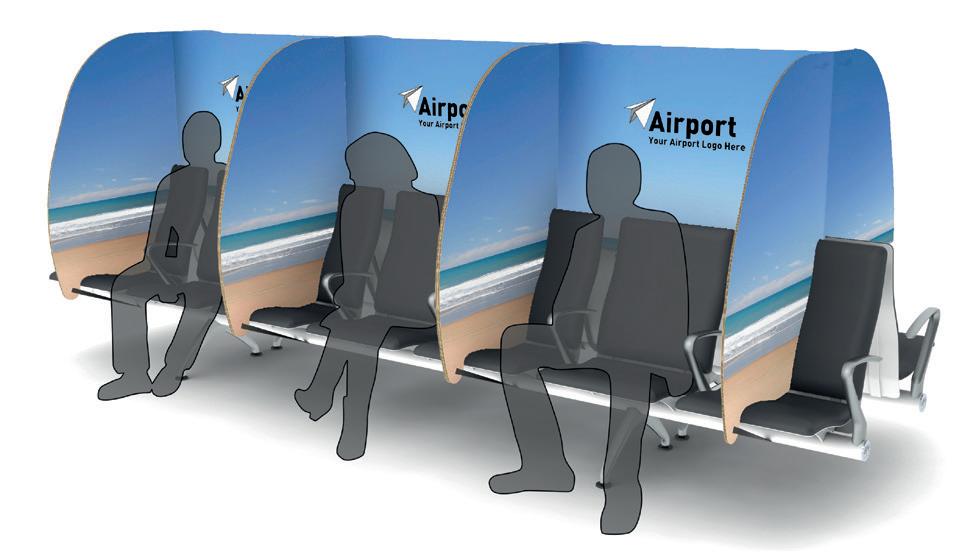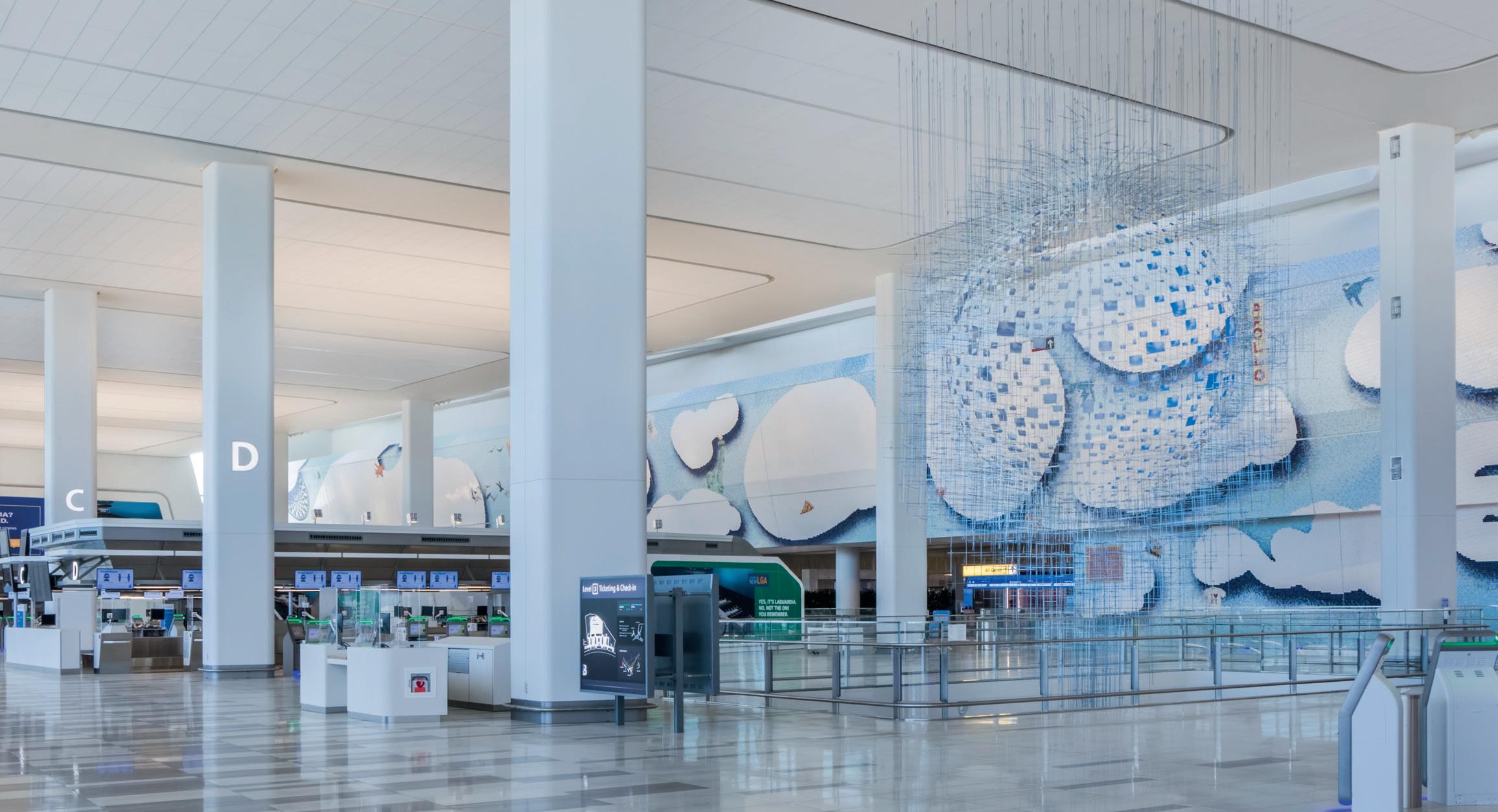
5 minute read
The wait is nearly over
What can we expect from Berlin Brandenburg Airport when the long awaited new gateway opens to traffic later this year? Joe Bates investigates.
There will be a mix of emotions when the German capital’s new €6 billion gateway, Berlin Brandenburg Airport (BER), opens for business on October 31 this year.
Advertisement
Pride and relief will certainly be among them as the new state-of-the-art airport is expected to take travelling to Berlin to another level, albeit it nine-and-a-half years later than originally planned.
However, some tears are likely to be shed, too, as Berlin Brandenburg’s opening will mean the closure of the city’s popular Tegel Airport (TXL), which is scheduled to shut its doors for the last time on November 8, and effectively Schönefeld (SXF) from Day 1 as the new airport has been built on its site and its passenger facilities will become BER’s Terminal 5.
Without a doubt the new gateway will be a welcome addition to Germany’s airport network and finally provide Berlin with the single facility it needs to actively co-ordinate the development of its route network.
Talking about the potential impact the new airport will have on the city, BER CEO, Engelbert Lütke Daldrup, says: “Once Berlin Brandenburg is in operation, the economic development in the capital region will accelerate enormously.
“We expect the new airport and its surroundings to create around 20,000 new jobs in the coming years. Apartments, day-care centres and schools will be added, as well as catering and commercial businesses.”
In terms of facilities, Berlin Brandenburg will initially boast parallel North and South runways and three terminals – the brand new midfield terminals (Terminal 1 and Terminal 2) with three piers (Main, North and South) and SXF’s old facilities (Terminal 5).
Operator, Flughafen Berlin Brandeburg (FBB), notes that the new main terminals – Terminal 1 is built and Terminal 2 is currently under construction – will have “structured façades and clear, geometric shapes that embrace architectural elements ranging from Schnikel to Bauhaus”.
BER’s design team, which includes GMP’s Meinhard von Gerkan and Hubert Nienhoff, says: “The new Berlin Brandenburg Airport comprises the passenger terminal and Airport City in the centre of the parallel take-off and landing runway system.
“It also includes waiting areas to the west and service and cargo areas to the east. All elements are arranged within the axial layout of the whole complex and form an architectural/functional unit.
“The roof of the passenger terminal spans the different functional areas in a sweeping gesture from the roadside concourse to the piers, linking the land side with the air side. The objective of the design is to maximise the convergence of structure, spatial relationships, function and architectural identity.

“The generosity and clarity of the terminal building is enhanced by the architectural motif of colonnades which form the transition between architecture and landscape, between buildings and open space, giving the new Berlin Brandenburg Airport its characteristic style.”
BER’s North Runway will be the existing 3,600 metre runway currently in use at Schönefeld, while its new South Runway is 4,000m, the 1,900m distance between them ensuring that they can be operated independently from each other.
Upon opening, BER’s 360,000sqm Terminal 1 will have 16 passenger jetways in the Main pier, 12 walk-stand boarding bridges in the North pier, and nine airbridges in the South concourse.
The airport will also have 115 aircraft parking positions including the 30 presently in use at Schönefeld, which will become BER North.
A combination of road and rail links courtesy of the S-Bahn station below Terminal 1, transfer bus, taxi or private car will ensure that it is possible to travel between the airport’s central terminals and T5 in less than 10 minutes.
The new midfield terminals will have more than 120 retail and F&B outlets between them, the total including a 1,700sqm walk-through duty free store operated by Gebr Heinemann; a hairdressing salon and locally accessible bakery, supermarket, pharmacy and flower shop.
While a number of specially made works of art will help create a unique sense of place. They include Takehito Koganezawa’s ‘Open Sky Box’ immediately after security; ‘Gadget’ by Olaf Nicolai; ‘Starry Sky’ by STOEBO; and ‘The Magic Carpet’ by Pae White.
For the facts and figures buffs among you, overall BER will have 10 check-in areas equipped with a total of 118 desks; 41 security screening lanes including five for transfer passengers; and eight baggage reclaim carousels.
The world’s newest airport will initially be capable of handling 40 million passengers per annum, but with demand expected to reach around 55mppa by 2040, FBB already has plans on the drawing board to add more gates, piers, a satellite building and a new Terminal 3 when demand dictates.
Lütke Daldrup enthuses: “Despite the coronavris crisis, preparations for the opening of the BER are on schedule and the opening date of October 31, 2020, has been secured.
“After that date, we will decide how to further expand the new airport and shape its surroundings, depending on the development of passenger numbers.”
Lufthansa, Brussels Airlines, Swiss and Austrian Airlines are set to make the switch from Tegel to Berlin Brandenburg Airport’s Terminal 1 on November 8, while low-cost carrier Eurowings will move to Terminal 2 on November 4.
The low-cost carriers actually dominate the Berlin market which is a focus city for Eurowings, easyJet, Ryanair and Sundair, and all are expected to make the move to Berlin Brandenburg, joining the host of airlines already serving Schönefeld that will simply continue to use the airport site.
A record 35.6 million passengers (+2.6%) passed through Tegel and Schönefeld in 2019 but it has, of course, been a different picture for both this year with air traffic virtually brought to a halt by COVID-19.
Things are beginning to pick up though, with Lütke Daldrup recently revealing that Berlin’s airports handled around 100 flights and 20,000 passengers per day in July. The figure shows a healthy increase from April’s low of less than 3,000 daily passengers but are still way down on the pre-pandemic norm of 100,000 per day.
So, Berlin Brandenburg will almost certainly experience a low-key start to its life, but Lütke Daldrup has no doubts whatsoever that the airport will eventually grow to become a key asset for Berlin and Germany.
He says: “I am convinced that the BER will be a growth engine for the capital region, especially after the bitter economic cutbacks due to the coronavirus crisis.”










